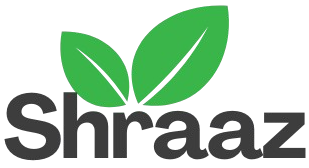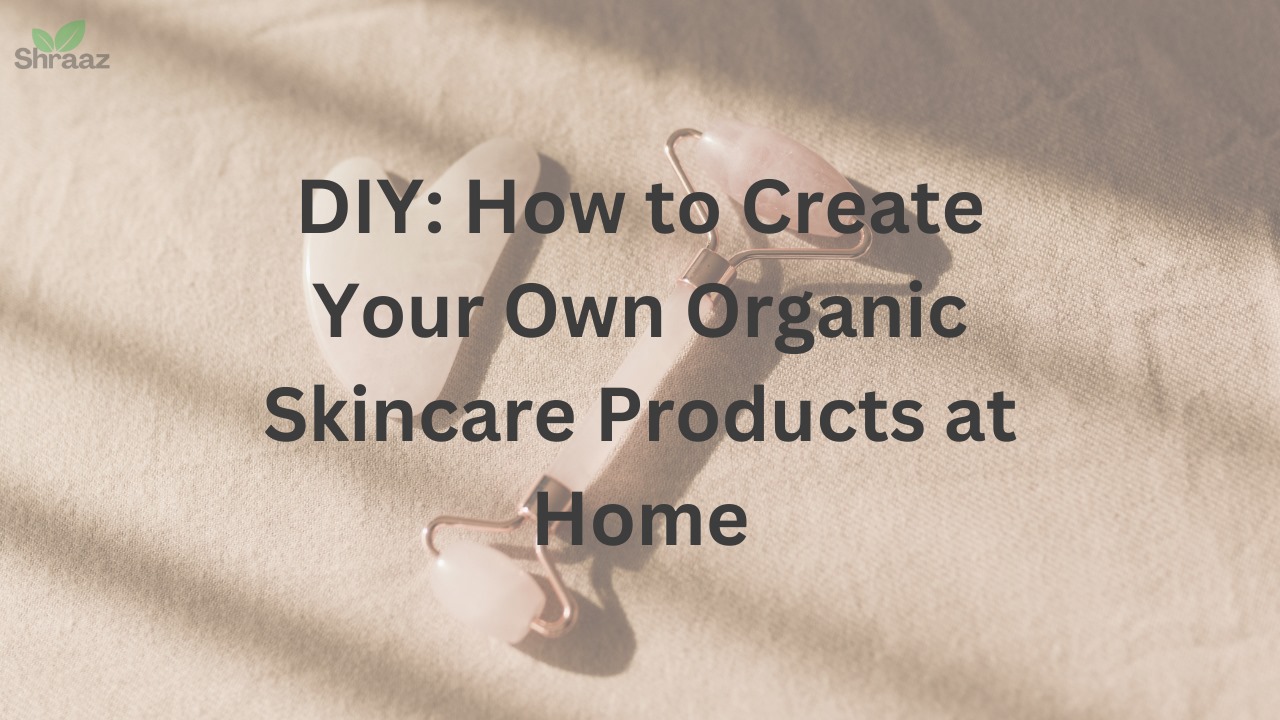Introduction
Creating your own organic skincare products at home offers a natural, cost-effective, and sustainable way to care for your skin. With rising concerns about synthetic chemicals and their impact on health and the environment, many people are turning to DIY skincare. In this comprehensive guide, we’ll explore the benefits of DIY organic skincare, the tools and ingredients you’ll need, step-by-step recipes, safety tips, common mistakes to avoid, and more.
For a broader discussion of the overall organic skincare beyond just DIY organic skincare products, check out The Ultimate Guide to Organic Skincare: Benefits, Ingredients, and Best Practices.
Benefits of Making Your Own Organic Skincare Products
Control Over Ingredients
One of the biggest advantages of DIY skincare is having complete control over the ingredients. Commercial skincare products often contain harmful chemicals like parabens, sulfates, and artificial fragrances, which can cause skin irritation or long-term health issues. When you make your own products, you can:
- Choose safe, non-toxic ingredients: Ingredients like coconut oil, shea butter, and essential oils provide nutrients and hydration without synthetic chemicals.
- Customize based on skin type: Whether you have dry, oily, or combination skin, you can adjust recipes to suit your specific needs. For example, use argan oil for dry skin or jojoba oil for oily skin.
Cost-Effectiveness
Store-bought organic skincare products can be expensive due to their high-quality ingredients and branding. DIY skincare allows you to:
- Save money in the long term: While there may be an initial investment in ingredients and tools, they last a long time and can be used in various recipes.
- Make large batches: You can produce larger quantities of your favorite skincare items, like body butter or lip balm, and store them for months, further reducing costs.
| Product | Average Store Price | DIY Cost |
| Organic Moisturizer | $25-$50 | ~$10 per batch |
| Lip Balm | $5-$10 per stick | ~$0.50 per stick |
| Body Butter | $20-$40 | ~$15 per batch |
Eco-Friendly
DIY skincare promotes environmental sustainability by:
- Reducing packaging waste: Store-bought skincare products often come in single-use plastic containers, contributing to landfill waste. By reusing glass jars or metal tins, you significantly reduce your carbon footprint.
- Sourcing sustainable ingredients: Organic and ethically sourced ingredients, such as fair-trade shea butter or cruelty-free beeswax, contribute to a more eco-conscious lifestyle.
Personalization
When you create your own skincare products, you can tailor them to your specific needs:
- Targeting specific skin concerns: Whether you’re dealing with acne, aging skin, or dryness, you can customize your formulations. For example, add tea tree oil for acne-prone skin or rosehip oil for anti-aging properties.
- Experimenting with scents and textures: You can create products that smell exactly how you want them to by blending essential oils like lavender, peppermint, or eucalyptus.
Avoiding Harmful Chemicals
Commercial skincare products can contain toxic ingredients that are harmful to your skin and overall health:
- Parabens: Often used as preservatives, parabens can disrupt hormones and may be linked to breast cancer.
- Sulfates: These harsh detergents are common in cleansers and can strip the skin of natural oils, leading to irritation.
- Artificial Fragrances: Synthetic fragrances can cause allergic reactions and skin sensitivities.
By using natural alternatives like vitamin E as a preservative or coconut oil as a cleanser, you can avoid exposing your skin to these potentially harmful substances.
Essential Tools and Ingredients for DIY Organic Skincare
Basic Tools Needed
To start creating your own skincare products, you’ll need some basic tools:
- Glass jars: Ideal for storing your homemade products as they are non-reactive and preserve the integrity of the ingredients.
- Measuring spoons and cups: Accurate measurement ensures balanced and effective formulations.
- Blender or hand mixer: Necessary for whipping body butters and creams to the desired consistency.
- Double boiler: Useful for melting butters and oils gently, preventing them from overheating and losing their beneficial properties.
- Spray bottles and dropper bottles: Perfect for storing toners, serums, and facial mists.
Common Organic Ingredients
The key to effective DIY skincare lies in selecting high-quality, organic ingredients. Here are some must-haves:
1. Carrier Oils
Carrier oils are the foundation of most skincare recipes. They provide hydration, vitamins, and fatty acids to the skin.
| Oil | Best For | Key Benefits |
| Coconut Oil | Dry skin | Deeply hydrating, antibacterial properties |
| Jojoba Oil | Oily, acne-prone skin | Balances oil production, anti-inflammatory |
| Argan Oil | Dry, aging skin | Rich in Vitamin E, anti-aging properties |
| Almond Oil | Sensitive skin | Gentle, soothing, high in antioxidants |
2. Butters and Waxes
Butters and waxes provide structure and deep moisturization to skincare products:
- Shea Butter: Rich in fatty acids and vitamins, ideal for moisturizing and healing dry skin.
- Cocoa Butter: Offers a protective barrier to lock in moisture.
- Beeswax: Acts as a natural emulsifier and thickener, perfect for lip balms and lotions.
3. Essential Oils
Essential oils are potent and should be used in small amounts for their therapeutic benefits:
- Lavender: Calms inflammation and promotes relaxation.
- Tea Tree: Has antibacterial properties, making it great for acne-prone skin.
- Rosehip: A powerful anti-aging oil that helps with skin regeneration.
4. Natural Exfoliants
Exfoliating ingredients remove dead skin cells and promote a glowing complexion:
- Sugar: A gentle exfoliant for the body and face.
- Coffee Grounds: Helps reduce cellulite and stimulates blood flow.
- Oatmeal: Soothes and softens sensitive skin.
5. Natural Preservatives
While many DIY skincare products are preservative-free, it’s essential to use natural preservatives when dealing with water-based products to prevent bacteria and mold growth:
- Vitamin E: Acts as both a skin-nourishing ingredient and a natural preservative.
- Rosemary Oil Extract: Extends the shelf life of oil-based products.
- Grapefruit Seed Extract: A natural antimicrobial agent.
6. Hydrating Ingredients
To keep your skin moisturized and refreshed, use hydrating ingredients like:
- Aloe Vera Gel: Calms and hydrates irritated or sunburned skin.
- Rose Water: Acts as a gentle toner that refreshes and soothes skin.
- Glycerin: A humectant that draws moisture into the skin, keeping it soft and supple.
7. Natural Clays and Powders
For deep cleansing and detoxifying, natural clays and powders are essential:
- Bentonite Clay: Absorbs toxins and impurities from the skin, ideal for oily skin.
- Kaolin Clay: A gentler clay suitable for sensitive skin types.
- Activated Charcoal: Detoxifies the skin and is often used in masks for its deep-cleansing properties.
Step-by-Step Guide to Making DIY Organic Skincare Products
Now that you have a solid understanding of the tools and ingredients you’ll need, it’s time to dive into the fun part—creating your own skincare products! Below are easy-to-follow, step-by-step recipes for a range of DIY organic skincare essentials, from moisturizers to exfoliators. Each recipe can be customized based on your skin type and preferences.
DIY Face Moisturizer
A hydrating face moisturizer is essential for maintaining soft, supple skin. This recipe uses natural oils and butter to lock in moisture without clogging your pores.
Ingredients:
- 2 tablespoons shea butter
- 1 tablespoon jojoba oil
- 1 tablespoon aloe vera gel
- 5 drops lavender essential oil (optional)
Instructions:
- Melt the shea butter in a double boiler until fully liquefied.
- Remove from heat and mix in the jojoba oil.
- Let the mixture cool, then stir in the aloe vera gel and essential oil.
- Transfer to a glass jar and let it set. Apply a pea-sized amount to your face after cleansing.
DIY Lip Balm
Lip balms are incredibly easy to make and provide deep nourishment, especially in dry weather.
Ingredients:
- 1 tablespoon beeswax
- 1 tablespoon coconut oil
- 1 tablespoon shea butter
- 5 drops peppermint essential oil (optional)
Instructions:
- Melt the beeswax, coconut oil, and shea butter in a double boiler until fully combined.
- Remove from heat and stir in the essential oil.
- Pour the mixture into lip balm tubes or small tins.
- Let it cool and solidify before using.
DIY Sugar Scrub (Exfoliator)
This sugar scrub gently exfoliates dead skin cells, leaving your skin soft and glowing.
Ingredients:
- 1 cup sugar (white or brown)
- ½ cup coconut oil
- 10 drops of your favorite essential oil (like orange or lavender)
Instructions:
- In a bowl, mix the sugar and coconut oil until well combined.
- Add the essential oil and stir.
- Transfer to a jar and use it as a body scrub once or twice a week in the shower.
DIY Face Mask (for Deep Cleansing)
This face mask is perfect for oily or acne-prone skin, as it draws out impurities and tightens pores.
Ingredients:
- 2 tablespoons bentonite clay
- 1 tablespoon apple cider vinegar
- 1 teaspoon honey
- 2-3 drops of tea tree essential oil
Instructions:
- Mix the clay and apple cider vinegar in a small bowl until a smooth paste forms.
- Stir in the honey and tea tree oil.
- Apply the mask to your face, avoiding the eye area. Leave it on for 10-15 minutes before rinsing off with warm water.
DIY Body Butter
Body butter is an excellent way to keep your skin moisturized, especially during dry seasons.
Ingredients:
- ½ cup shea butter
- ¼ cup cocoa butter
- ¼ cup coconut oil
- 1 tablespoon almond oil
- 10 drops of essential oil (like vanilla or lavender)
Instructions:
- Melt the shea butter, cocoa butter, and coconut oil in a double boiler.
- Remove from heat and stir in the almond oil and essential oil.
- Let the mixture cool slightly, then whip it with a hand mixer until fluffy.
- Store in a glass jar and use after showering.
DIY Toner
This DIY toner helps balance your skin’s pH and refreshes your complexion.
Ingredients:
- ½ cup rose water
- 2 tablespoons witch hazel
- 5 drops lavender essential oil
Instructions:
- Combine the rose water and witch hazel in a spray bottle.
- Add the lavender essential oil and shake well.
- Spray on your face after cleansing or throughout the day for a refreshing boost.
DIY Makeup Remover
A gentle makeup remover that easily wipes away makeup without irritating your skin.
Ingredients:
- ¼ cup olive oil
- ¼ cup witch hazel
- 1 tablespoon aloe vera gel
Instructions:
- Mix all ingredients in a small bottle.
- Shake before each use. Apply to a cotton pad and gently wipe away makeup.
Important Tips for Safe and Effective DIY Skincare
Creating your own skincare products is rewarding, but it’s important to follow safety guidelines to ensure your products are both safe and effective. Here are some essential tips to keep in mind:
Patch Testing New Products
Before applying any new skincare product to your face or body, always perform a patch test. This involves applying a small amount of the product to a discreet area (like your inner wrist) and waiting 24 hours to check for any allergic reactions.
Shelf Life and Storage
Homemade skincare products, especially those without preservatives, tend to have a shorter shelf life than commercial products. Here’s how to extend their life:
- Store in a cool, dry place: Exposure to heat and humidity can spoil ingredients more quickly.
- Use airtight containers: Glass jars and bottles with tight lids will keep your products fresh for longer.
- Label your products: Write the date you made the product on the container, so you’ll know when it’s time to discard it.
| Product | Shelf Life (with natural preservatives) | Shelf Life (without preservatives) |
| Moisturizer | 6-12 months | 3-6 months |
| Lip Balm | 1 year | 6-9 months |
| Sugar Scrub | 6-12 months | 3-6 months |
Use of Preservatives
Water-based products like toners, lotions, and masks are susceptible to bacterial growth. Using natural preservatives such as vitamin E or grapefruit seed extract can help extend their shelf life. Avoid synthetic preservatives like parabens, which may cause skin irritation.
Hygiene
Always ensure that your workspace and tools are clean and sanitized before making skincare products. Use rubbing alcohol to disinfect your containers and utensils to avoid introducing bacteria or mold into your formulations.
Customization Based on Skin Type
One of the best parts of DIY skincare is the ability to tailor your products to your unique skin type. Here are some tips for customizing your recipes:
- For dry skin: Use extra-hydrating oils like avocado or argan oil.
- For oily skin: Opt for lighter oils like jojoba and include clay masks to help absorb excess oil.
- For sensitive skin: Avoid essential oils or harsh exfoliants, and stick to gentle ingredients like chamomile or aloe vera.
Common Mistakes to Avoid When Making DIY Organic Skincare
When you’re new to making skincare products, it’s easy to make mistakes. Here are some common pitfalls to watch out for and how to avoid them:
Using Too Much Essential Oil
Essential oils are highly concentrated and should be used sparingly. Overuse can lead to skin irritation, allergic reactions, or photosensitivity (especially with citrus oils). Always follow recommended dilution guidelines:
- Face products: 1-2% dilution (about 6-12 drops of essential oil per ounce of carrier oil).
- Body products: 2-3% dilution (about 12-18 drops of essential oil per ounce of carrier oil).
Skipping Preservatives
Many beginners skip preservatives in water-based products, which can lead to bacterial growth. This is not only harmful to your skin but can also ruin your product. Be sure to include natural preservatives like grapefruit seed extract or store your products in the fridge to keep them fresh.
Not Considering Allergies
Even natural ingredients can cause allergic reactions. It’s essential to:
- Research common allergens: For example, some people are allergic to almond oil or shea butter.
- Perform patch tests: Test every new ingredient or product on a small area of your skin before full use.
Incorrect Measurements
Getting the right balance of ingredients is crucial for effective and safe skincare products. Always use proper measuring tools (like kitchen scales or measuring spoons) to ensure accuracy, especially when dealing with strong ingredients like essential oils or clays.
Benefits of Using Organic Skincare
Using organic skincare, whether homemade or store-bought, offers a range of benefits for both your skin and the environment. Here’s why organic skincare is gaining popularity worldwide:
No Harmful Chemicals
Organic skincare products are free from harsh chemicals like parabens, sulfates, and artificial fragrances, which can irritate the skin and cause long-term health issues. By opting for organic ingredients, you reduce your exposure to these harmful substances.
Nourishing the Skin Naturally
Organic ingredients are rich in vitamins, minerals, and antioxidants that nourish the skin. For example:
- Shea butter is packed with vitamins A and E, which promote skin healing.
- Coconut oil provides hydration while its natural antibacterial properties help reduce acne.
- Rosehip oil is known for its anti-aging benefits, thanks to its high concentration of vitamin C.
Ethical and Sustainable
Many organic ingredients are sourced through ethical, sustainable practices, supporting fair-trade communities and reducing environmental impact. Additionally, DIY organic skincare reduces packaging waste and promotes eco-friendly living, and you can customize your skincare for different age groups.
Conclusion
Making your own organic skincare products at home is an empowering, sustainable, and cost-effective way to care for your skin. By understanding the benefits of organic skincare, equipping yourself with the right tools and ingredients, and following safe practices, you can create high-quality products tailored to your unique skin needs. Whether you’re new to DIY or an experienced crafter, the recipes and tips in this guide will help you embark on your organic skincare journey with confidence.
Not only will you enjoy the personal satisfaction of crafting your skincare, but your skin will also thank you for the nourishing, chemical-free care it deserves!
Additional Resources
To deepen your knowledge and skills in DIY organic skincare, here are some valuable resources for further learning:
Books
- “Organic Body Care Recipes” by Stephanie Tourles
A comprehensive guide with over 175 recipes for natural and organic skincare products, including lotions, balms, and scrubs. - “The Complete Guide to Natural Homemade Beauty Products & Treatments” by Amelia Ruiz
This book covers all aspects of DIY beauty products, from skin care to hair treatments, with detailed instructions on making them from scratch. - “The Beauty of Dirty Skin” by Dr. Whitney Bowe
A dermatologist’s take on how a healthy microbiome impacts your skin, with insights into organic and natural skincare routines.
Online Courses & Workshops
- Formula Botanica
A leading online platform for learning how to formulate organic skincare products. Their courses range from beginner to professional level, with certifications available. - School of Natural Skincare
This online school offers courses on natural and organic skincare formulation, along with tips for creating your own beauty business. - Herbal Academy
Offering a variety of herbalism courses, Herbal Academy provides insights into the use of plant-based ingredients for skincare and health.
Blogs and Websites
- Wellness Mama
A trusted blog featuring DIY skincare recipes, natural health tips, and eco-friendly living advice. - Hello Glow
A popular site with easy-to-follow recipes for DIY skincare, haircare, and makeup, focusing on organic and natural ingredients.




